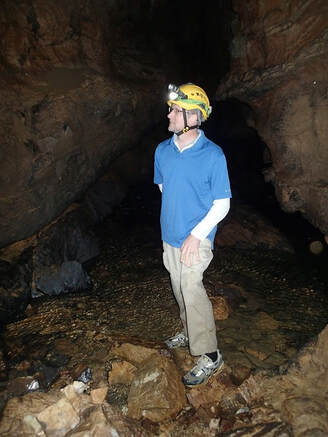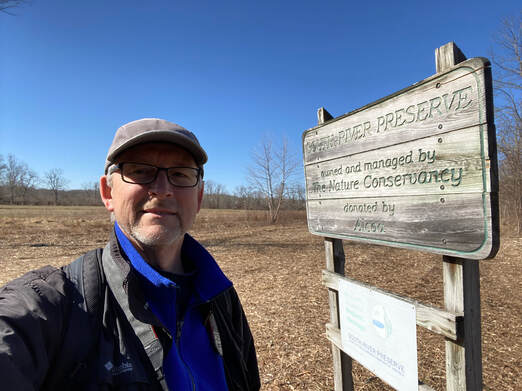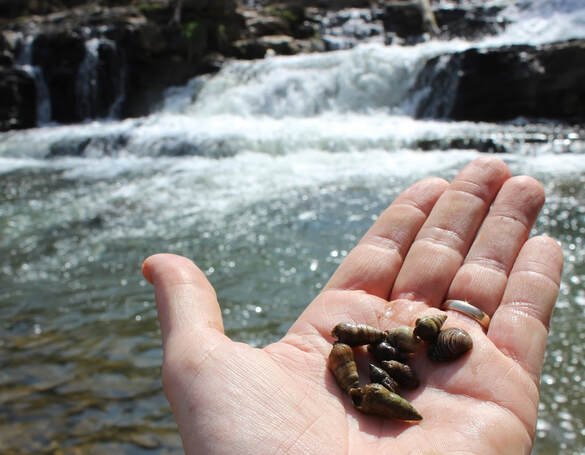 Tim Koppenhaver in a cave at Mill Creek Springs Natural Area Preserve. Photo courtesy of Tim Koppenhaver.
Tim Koppenhaver in a cave at Mill Creek Springs Natural Area Preserve. Photo courtesy of Tim Koppenhaver.
Over the past decade, I’ve been on a property-collecting quest visiting one hundred locations either managed, worked in, or established by The Nature Conservancy (TNC). This quest has taken me all over the country, and once even led me under the sea off the coast of Mexico. But the state in which I’ve visited the most properties (31) is my home state of Virginia.
Some TNC properties in Virginia are publicly accessible, like Fraser Preserve in Fairfax County or Fortune’s Cove in Nelson County. Others have been turned over to varying entities to ensure their protection. The Virginia Department of Conservation and Recreation, for instance, now manages Ogden’s Cave as a Natural Area Preserve. Others, like Greenbrier Park in Charlottesville, are protected by The Park Authority Act of Virginia which places them in the hands of city or county governments.
The thirty-one Virginia properties visited represent an amazing mosaic of varied environments – from soaring mountain tops to sea-level barrier islands. Being a trained Virginia Master Naturalist (VMN) made this quest even more rewarding. During our VMN training, we all learned about Virginia’s magnificent environmental diversity, and this quest really brought that understanding into clear focus. As naturalists know, Virginia’s diversity is characterized by its five physiographic provinces, and TNC has worked in each one.
Along the Coastal Plain, Parramore Island is part of the vital barrier islands located in Northampton County and is Virginia’s largest Natural Area Preserve.
In the Piedmont, TNC along with help from DCR, DWR, the City of Charlottesville, and Albemarle County helped establish Ivy Creek Natural Area – a place of beauty and ecological significance in a rapidly urbanizing section of Albemarle County.
In the Blue Ridge, Buffalo Mountain in Floyd County is one of the state’s most significant areas whose high-elevation, wind-exposed openings, and magnesium rich soils make it unlike any place in Virginia.
In the Ridge & Valley province, Cowbane Prairie in Augusta County protects a remnant of what the Shenandoah Valley once looked like when wet and mesic prairies and calcareous spring marshes were common.
And near the Appalachian Plateau, The Pinnacle in Russell County protects towering cliffs, limestone ledges, and waterfalls near the Clinch River – home to fifty species of mussels, which is more than any other river in the world.
Protected lands like these and so many others are critical protectors of Virginia’s diversity. According to NatureServe, Virginia is the country’s 12th most diverse state in terms of plants and animals (8th in fishes and 3rd in amphibians). To learn more about Virginia’s diversity, DCR’s Conservation Lands Database includes a robust interactive map which helps better understand all the layers of protection in the state. The database includes state, federal, private, and locally managed lands, and conservation easements. It shows that of Virginia’s 25 million acres, over four million – or about 17% – are currently protected.
The Conservation Lands Database is loaded with a plethora of data and provides all VMNs ample opportunity to craft their own property-collecting quest to help foster an even deeper understanding of our state’s magnificent diversity.


